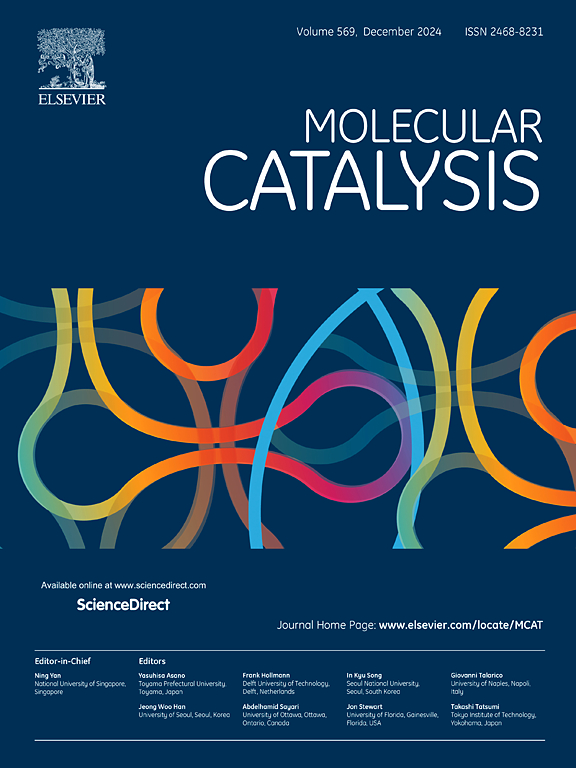Theoretical studies on the mechanism of Rh-catalyzed [(3+2+2)] cycloisomerization reactions of dienophile-substituted alkylidenecyclopropanes
IF 3.9
2区 化学
Q2 CHEMISTRY, PHYSICAL
引用次数: 0
Abstract
The detailed reaction mechanism of Rh-catalyzed [(3+2+2)] cycloisomerization reactions of dienophile-substituted alkylidenecyclopropanes to construct the bridged tricyclic products with DFT calculations has been investigated. The catalytic cycle primarily comprises four steps: oxidative addition, proximal alkene insertion, distal alkene insertion, and reductive elimination. The reactions initiate with Rh-mediated the cleavage of cyclopropane distal C−C bond to give the key η4-TMM Rh(III) intermediate, which undergoes the proximal alkene insertion step to dictate the stereochemical outcome. The subsequent competing the 1,2-insertion and 2,1-insertion of the distal alkene moiety has also been discussed for comparison. The calculations reproduce quite well diastereoselectivity observed experimentally, demonstrating that the cis coordination pathway has high diastereocontrol. For comparison, various C−C coupling reaction pathways and substrate scopes have been examined.

铑催化[(3+2+2)]取代烷基环丙烷环异构化反应机理的理论研究
用DFT计算方法研究了铑催化[(3+2+2)]取代烷基环丙烷环异构化反应生成桥接三环产物的详细反应机理。催化循环主要包括四个步骤:氧化加成、近端烯烃插入、远端烯烃插入和还原消除。反应开始于Rh介导的环丙烷远端C - C键的裂解,得到关键的η - 4- tmm Rh(III)中间体,该中间体经过近端烯烃插入步骤决定了立体化学结果。随后的竞争1,2-插入和2,1-插入的远端烯烃部分也进行了比较讨论。计算结果较好地再现了实验观察到的非对映选择性,表明顺式配位途径具有较高的非对映控制性。为了比较,研究了各种C - C偶联反应途径和底物范围。
本文章由计算机程序翻译,如有差异,请以英文原文为准。
求助全文
约1分钟内获得全文
求助全文
来源期刊

Molecular Catalysis
Chemical Engineering-Process Chemistry and Technology
CiteScore
6.90
自引率
10.90%
发文量
700
审稿时长
40 days
期刊介绍:
Molecular Catalysis publishes full papers that are original, rigorous, and scholarly contributions examining the molecular and atomic aspects of catalytic activation and reaction mechanisms. The fields covered are:
Heterogeneous catalysis including immobilized molecular catalysts
Homogeneous catalysis including organocatalysis, organometallic catalysis and biocatalysis
Photo- and electrochemistry
Theoretical aspects of catalysis analyzed by computational methods
 求助内容:
求助内容: 应助结果提醒方式:
应助结果提醒方式:


